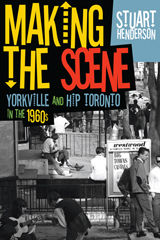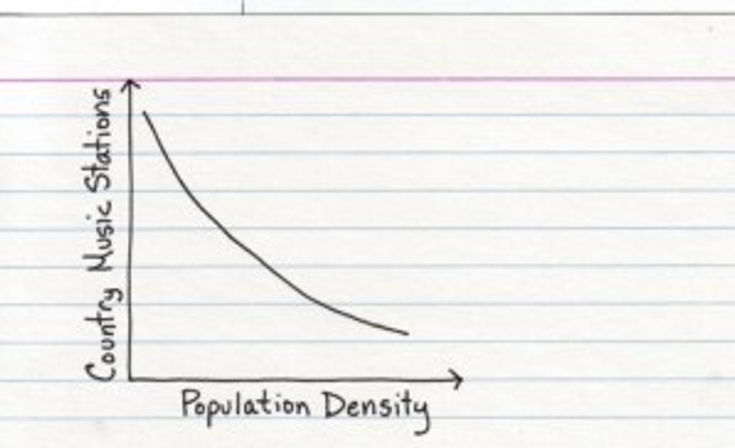Are drug ethnographies necessary?
- Claire Clark
- Oct 10, 2012
- 5 min read
Updated: Aug 30, 2023
Several semesters ago, I taught an interdisciplinary course called Addiction in History, Science, and Culture. I had a wonderful group of undergrads, and they often posed questions that have troubled researchers across these fields for decades. A favorite question is the topic of this post: What is the point of ethnographic research? Didn’t we learn all we can from addiction ethnographies in the 1970s?
By the 1970s, we had learned quite a lot. Canonical qualitative research on drug cultures by Alfred Lindsmith, Bingham Dai, and Howard Becker was on paper before the heroin epidemics of the late 1960s and early 1970s hit. In the US and UK, those epidemics linked ethnography to epidemiology; community-based surveillance teams began to monitor drug using behaviors as though they were contagious diseases. The approach proved useful in the 1980s when injection drug use was found to be associated with transmission of a famously epidemic disease—HIV. Ethnographers, activists, and ex-addict outreach workers tapped into previous knowledge about networks of illicit drug users in order to communicate evidence-based preventive strategies (such as needle sterilization) that later became known as “harm reduction.”

Street Ethnographies, circa 1979
By the 1990s, harm reduction, though contentious, became the dominant paradigm in which ethnographic research on “under-studied” populations of illicit drug users was conducted. Nancy Campbell and Susan Shaw have suggested that state-funded ethnographic research today functions more like a modest public health intervention into the lives of drug-users than a source of new knowledge. In fact, they argue, the incitement to harm reduction could actually impede the exchange of information that runs contrary to the dominant paradigm. And the ethics of the interactions between researchers and drug-using study participants are tricky to begin with.

Philippe Bourgois & Jeff Schonbergs’ visual ethnography of contemporary California heroin users [Slideshow]
People who use drugs are a vulnerable population, which means that studies involving this population require additional regulatory oversight. The Belmont Report, issued in the wake of several major research scandals in the 1970s, introduced three fundamental ethical principles—respect for persons, beneficence, and justice—that continue to guide human subjects research today.

HHS Belmont Report Educational Video [Source: You Tube]
Under these guidelines, research participants have a right to know the potential benefits and harms that could arise from participating in a study before agreeing to take part in it. Potential participants who are not in a position to make a rational decision about whether to enroll in a study are typically called “vulnerable populations.” Drug use often incapacitates people, and can also drive them to behave irrationally. A defining feature of addiction is the inability to temper behavior driven by an immediate craving, despite having an intellectual understanding of the behavior’s long-term consequences. Furthermore, addictive behaviors can also result in other disadvantages: insecure housing and employment, strained familial relationships, even incarceration. So as research subjects, people who use drugs are definitely vulnerable.
A “beneficent” study design can help compensate for vulnerability; if a study directly benefits potential subjects, then the research can often be justified. In university and government settings, most ethnographic research is legitimated by Institutional Review Boards (or IRBs), panels of experts that weigh the risks and benefits of proposed studies and give sufficiently ethical ones the green light. Several students in my class thought that so-called “street” ethnographies were exploitative: there was no way of knowing in advance whether ground-up, qualitative research would reveal new knowledge that improves participants’ lives. The less-than-ideal living conditions that characterize drug cultures is already well known, as is the efficacy of needle exchange programs. Conditions of anonymity and confidentiality didn’t sufficiently minimize the risks that drug-using participants would be exposed to social shaming or even legal prosecution. Better to spend research dollars on basic science breakthroughs, said some students. We’ve learned a lot about brains since the 1970s.
I think this common assumption that drug ethnography is synonymous with monitoring injection drug use (or users) may cause potential researchers to overlook other uses—and benefits—of the ethnographic approach. Alcohol and drugs historians are attuned to the ways in which historical and social contexts shape substance use practices and patterns. Stereotypes about users may remain static for decades, but patterns of use seldom do.
Ethnography can counter cultural assumptions and clarify quantitative data. In his history of Yorkville—the Haight-Ashbury of Canada— Stuart Henderson classifies Yorkville’s population according to an ethnographic taxonomy published by the Addiction Research Foundation (ARF) in the late 1960s.

Henderson’s Making The Scene
Gopala Alampur went undercover, then native, in Yorkville’s drug scene, where he identified four distinct groups: “Greasers, Hippies, Weekenders, and Bikers.” Each subculture had different substance use practices: greasers were more likely to abuse alcohol and heroin, hippies preferred psychedelics and marijuana. Henderson argues that Alampur failed to appreciate the way these subgroups intersected “in reality and in the public imagination,” but he also suggests that Alampur complicated the mainstream misunderstanding that Yorkville was a singular site of countercultural iniquity. When the newspapers called a slight increase in Toronto hepatitis rates the “hippie hepatitis epidemic,” lawmakers used the stories to justify “stronger [sanitary] laws to put down hippies.” Had the ARF’s ethnographic work been paired with the slightly rising rates, the public might have learned that not only did the number of hepatitis cases fail to reach epidemic proportions, the spread was entirely confined to a relatively small group of IV drug users—who were not usually hippies, and “never more than a small minority in the Yorkville scene.”
In-depth, qualitative research can also help explain why the use of a particular drug takes off in a given place and time.

Reding told Points that he found the big-picture data the “least interesting” part of his book. [Image Source: Indexed]
Journalist Nick Reding’s close study of rising methamphetamine use in Oelwein, Iowa explores why a substance invented andprescribed in the 1930s became a drug of abuse in rural America in the 1980s and reached ubiquity at the turn of the 21st century. Rather than making inferences about individuals based on solely on trends suggested by large datasets, Reding reports the accounts of meth users, dealers, and enforcers who link the appeal of meth to the influences of de-industrialization such as limited job prospects and the pressure to perform increasingly taxing manual labor at low wages. Using detailed local observation and in-depth interviews, Reding draws portraits of lives affected by meth along Craig Reinarman’s “sociological fault lines.” Though Reding notes that 1950s-era Methedrine and Benzedrine addicts became popular symbols of anarchy, recent qualitative research has consistently demonstrated that many individuals were initially attracted to the drug in the early 2000s for a variety of reasons, none of which were particularly psychopathic.
Finally, perhaps the most practical but crucial application of ethnographic work is in needs assessment. Well-meaning policymakers too often design programs (or punishments) without taking into account the needs of a given population, which are usually varied and

Drug users don’t just have treatment preferences: they have their own ideas about what sort of research practices qualify as beneficent, respectful, or just. One recent qualitative study asked 90 drug users to evaluate a series of ethical dilemmas related to research with drug using populations. The answers among current and recovering drug addicts were nuanced and thoughtful. They were just as “diverse and sensitive to the research context” as the responses to similar issues among the highest rung of IRB reviewers, who—by this account—tend to be drawn from a population of mid-career, middle-class academics. Rather than abandoning qualitative research with people who use drugs, the author suggests that researchers and IRBs “engage active drug users as moral agents” by “integrating prospective participant opinions in ethical decision-making.”
Addiction research is a multidisciplinary enterprise searching for a solution to an unstable and contentious problem. In recent years, the technologies we use to understand and address this problem have grown increasingly refined, but I don’t think the older ones—field notes, interviews, life histories—are yet obsolete.
Are drug ethnographies history? I sure hope not.





